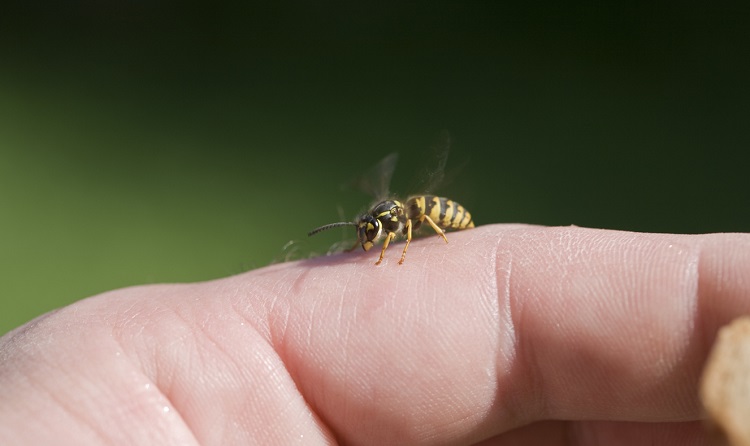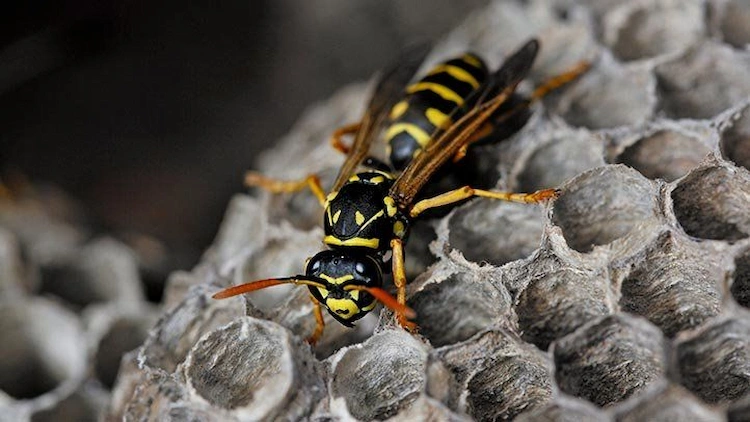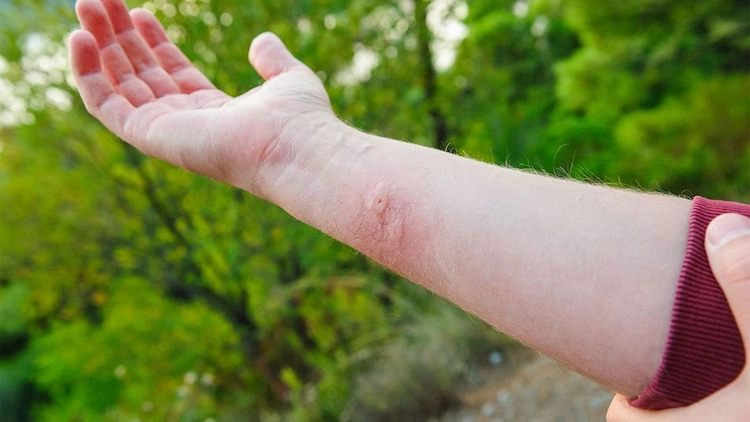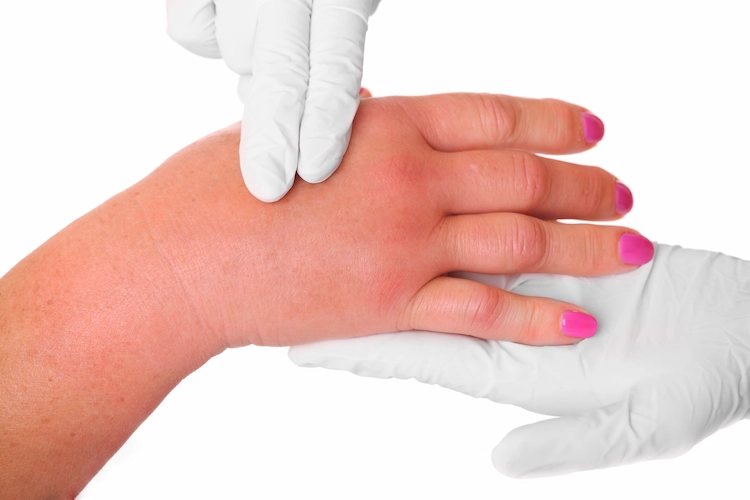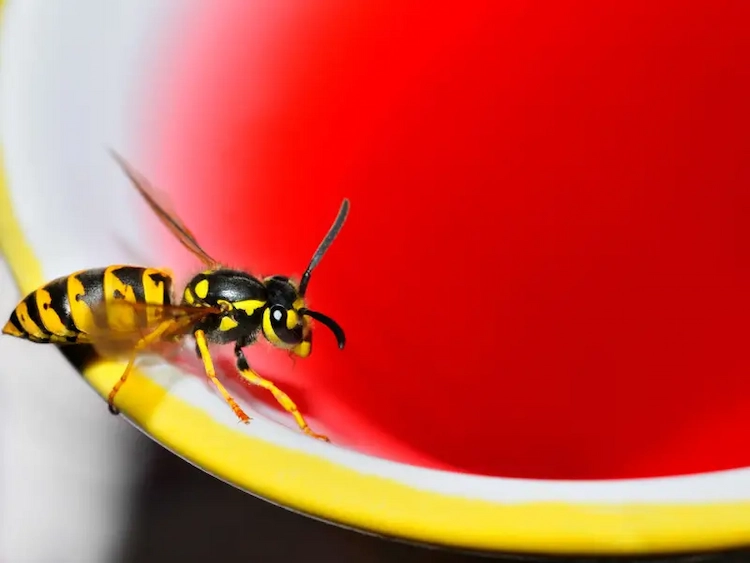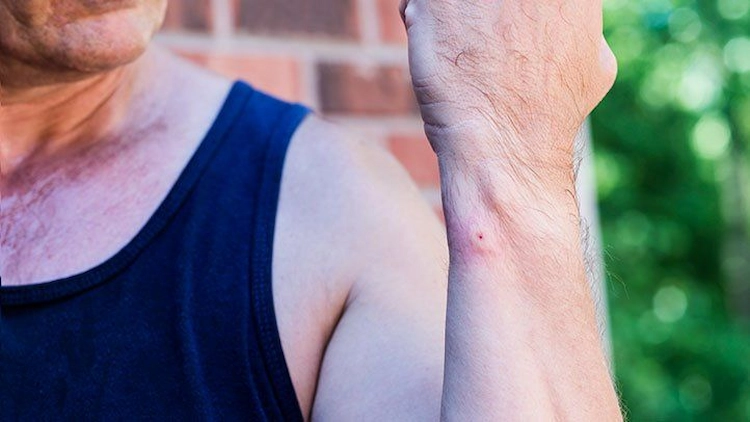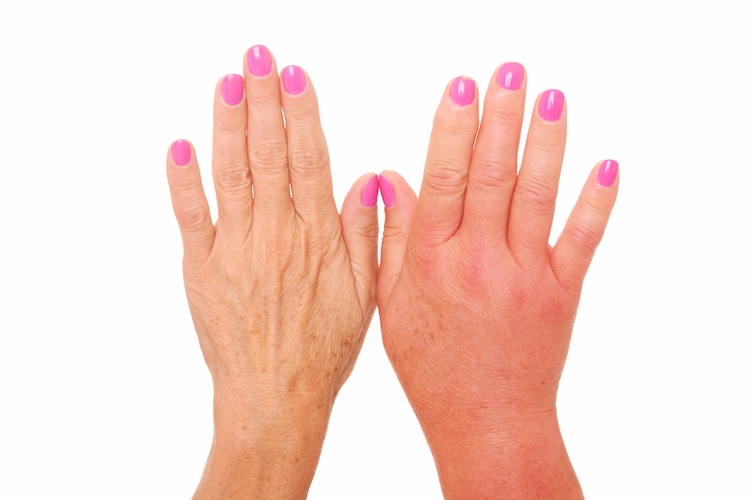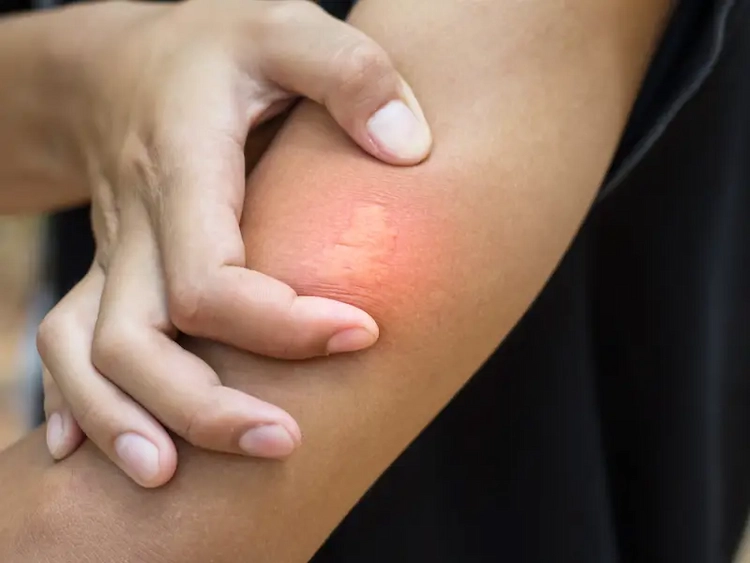Insect stings in summer can be dangerous for allergy sufferers, but fortunately there are some treatments and home remedies for wasp stings that can help. Wasps are not normally aggressive and their stings usually only cause painful reddening of the skin, which will subside. However, in some cases, serious allergic reactions occur that require appropriate treatment. Here is some useful information and advice that can help you in the event of a wasp sting.
When You Can Be Stung By Wasps?
Stinging insects like bees and wasps can be a nuisance during the warmer months when they are most active. While a sting from any insect can be painful, wasps are particularly notorious. This is because wasps react when interacting and sting more often than, for example, bees. However, most wasps only sting when they or their nest are disturbed or when irritated by human contact. Unlike bees, wasps can sting multiple times because they don’t lose their stinger with one sting. They also inject a poison into the victim’s skin with their sting.
Wasp venom can cause significant pain and irritation. It’s also possible to have a serious reaction if you’re allergic to the venom. In any case, prompt treatment is important to relieve symptoms and complications. If you have been stung by a wasp, you will usually feel pain and swelling in and around the wound. It can be difficult to tell a wasp from a bee sting apart from a notable marker. In the unlikely event that you do run into a wasp, here’s what you need to know about home remedies for wasp stings and sting allergies.
What Are the Symptoms of a Wasp Sting?
Most people who are not allergic to stings experience only minor symptoms during and after a wasp sting. Initial sensations may include stabbing pain or burning at the injection site. Redness, swelling and itching can also occur. In addition, you will likely develop a bump around the puncture spot. A tiny white spot may be visible in the center where the stinger pierced your skin. Usually, the pain and swelling go down within a few hours after the sting. People with strong local reactions may be allergic to wasp stings, but they don’t have life-threatening symptoms like anaphylactic shock. Major local reactions to wasp stings include extreme redness and swelling that increases two or three days after the sting.
The most severe allergic reactions to wasp stings are called anaphylaxis. This condition occurs when the body goes into shock in response to wasp venom. Most people who go into shock after a wasp sting do so very quickly. It is important to seek emergency care immediately to treat anaphylaxis. Symptoms of a severe allergic reaction to wasp stings include severe swelling of the face, lips, or throat, and hives or itching in areas of the body unaffected by the sting. In addition, breathing difficulties such as wheezing, dizziness, a sudden drop in blood pressure, drowsiness, loss of consciousness, diarrhea, abdominal cramps and a weak or racing pulse can occur.
Possible Treatment and Home Remedies for Wasp Sting
There are methods and home remedies for wasp stings that you can use to relieve the pain. Wash the stung area with soap and water to remove as much of the venom as possible. For example, applying ice to the area may provide mild relief. You can apply ice for 20 minutes once an hour as needed. However, wrap the ice in a towel or hold a cloth between the ice and your skin to avoid cold burns. Keep the red skin clean and dry to avoid infection and cover with a bandage if necessary. You should also consider getting a tetanus shot within a few days of the sting if you haven’t had a booster shot in the past 10 years.
Vinegar is another possible home remedy for wasp stings that you can use. The theory goes that the acidity of vinegar can help neutralize the alkalinity of wasp stings. The opposite is true for bee stings, which are more acidic. To use vinegar on wasp stings, soak a cotton ball in apple cider or white vinegar and place it on the affected area of the skin. Apply gentle pressure to relieve pain and inflammation. You can leave the cotton ball on your skin for a few minutes.
Use Other Remedies for Wasp Stings
Mix unseasoned meat tenderizer powder with a little water. Then apply it to the stung area with a cotton ball and leave it on for 15 to 20 minutes. The meat tenderizer contains a chemical called papain, which can break down wasp venom to reduce pain and swelling. Another way to relieve symptoms is to use baking soda. A paste made from baking soda and some water can also break down or neutralize the poison. Apply it to the affected skin area and leave it on for 15 to 20 minutes. A cool, wet tea bag may also help fight inflammation and reduce swelling. Hold this under cold water and apply to your skin for 15 to 20 minutes.
Wasp Stings Remedies for Pregnant Women and Young Children
Wasp stings can occur at any stage of life, including pregnancy. They usually don’t pose a major problem unless you have a known allergy to poisons or have had major local reactions in the past. You can use the same treatment measures during pregnancy, but you should avoid antihistamines with decongestant ingredients. While wasp stings alone will not harm an unborn baby, a severe allergic reaction can. In addition, it is important to use an antidote if necessary and to call a doctor if you are experiencing anaphylaxis while pregnant.
While insect bites are often seen as a rite of passage in childhood, that doesn’t make them any less dangerous and uncomfortable. Young children are particularly at risk because they may not be able to fully verbalize that they have been stung by a wasp. Therefore, when your toddler is playing outside, you should be alert for signs of a wasp sting and immediately investigate the cause of the crying and discomfort. From a young age, you can teach your children how to prevent wasp stings. For example, you can show your child what wasps and their nests look like and how to avoid them. Other safety precautions include not going barefoot outdoors and avoiding drinking sugary beverages outdoors that may attract wasps.
Prevention of Allergic Reactions without Home Remedies For Wasp Stings
If you’ve had a serious allergic reaction to a bee or wasp sting, talk to your doctor about an allergy skin test. Also ask for a bee sting kit. When doing this, make sure you know how to give yourself an injection. You should also wear a medical alert bracelet or necklace that describes your allergy. If you’ve had a severe reaction and a positive venom skin test, you can also try venom immunotherapy. This will give you purified venom on a weekly basis, which can prevent a future anaphylactic reaction. You can also reduce the chance of getting bitten by avoiding brightly colored, white, or pastel colored clothing. Do not use cosmetics or perfumes with floral scents. Food smells attract insects, especially wasps, so be vigilant when cooking or eating outdoors.

